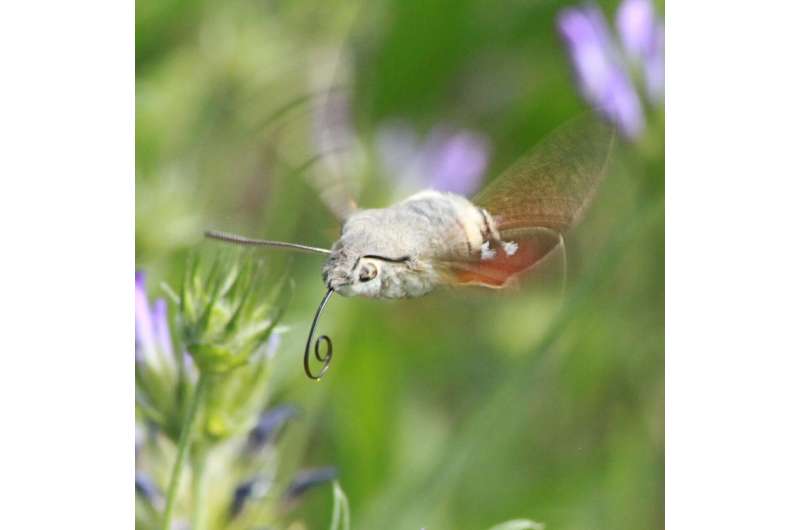Scientists investigate the sensory information hummingbird hawk moths rely on to control their proboscis
Originally published by University of Konstanz, January 29, 2024
Hummingbird hawk moth (Macroglossum stellatarum) foraging in France (Sorède) Credit: Anna Stöckl
Just as when we humans reach for objects, the hummingbird hawk moth uses its visual sense to place its long proboscis precisely on a flower to search for nectar, according to a study by Konstanz biologists.
Have you ever seen a hummingbird hawk moth? When people encounter this moth for the first time, they are usually intrigued: Looking like a cross between a butterfly and a bird—hence the name—this animal has the amazing ability to hover like a helicopter for long periods.
On closer inspection, another feature of the hummingbird hawk moth quickly catches the eye: the spiraling curled proboscis, which is as long as the entire animal.
The moth uses its proboscis to suck nectar by inserting it through a tiny opening into the floral nectaries, seemingly effortlessly and in a matter of seconds. "It's like trying to hit the opening of a drink can with a two meters long straw in your mouth," says Anna Stöckl, a biologist at the University of Konstanz.
In a study appearing in the journal PNAS, she and her colleagues investigated the sensory information the moths rely on to precisely control their proboscis.



Comments
Post a Comment